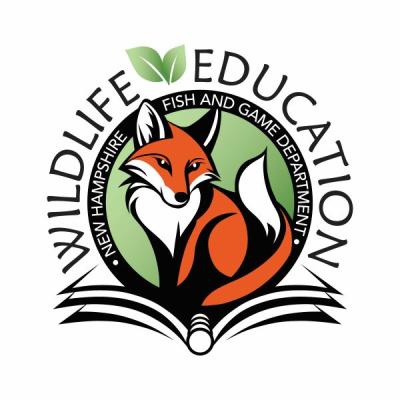Wildlife Education
Educational Resources Centered Around New Hampshire Wildlife
For Your Classroom
 Whether you're a teacher an organization or someone who is interested in wildlife, these pages can provide you with a connection to wildlife education. We provide high-quality professional development for teachers, and our school-based programs align with the Next Generation Science Standards. Our resources are available to organizations and schools interested in learning about, or teaching others about wildlife to help sustain healthy wildlife populations in New Hampshire.
Whether you're a teacher an organization or someone who is interested in wildlife, these pages can provide you with a connection to wildlife education. We provide high-quality professional development for teachers, and our school-based programs align with the Next Generation Science Standards. Our resources are available to organizations and schools interested in learning about, or teaching others about wildlife to help sustain healthy wildlife populations in New Hampshire.
- Borrow A Curriculum Kit (Furs, Tracks, Skulls, etc)
- Request Track Cards and other Handouts
- Wild Times for Kids Publication
- On The Nature Trail Podcast
- Schoolyard Action Grants
- Winter Severity Index Collection Project
- Watershed Education
- More Curriculum Resources
Professional Development Training and Workshops for Educators and Youth Leaders
Growing Up WILD
This 3-4-hour teacher workshop presents activities relevant to introducing young learners, ages 3-7, to nature and the outdoors, and introduces the Growing Up Wild manual.
Growing Up WILD activities foster critical early childhood skill development, while tapping into children’s sense of wonder about nature and the wildlife around them. Workshop participants usually include k-2 classroom teachers, childcare center staffs and preschool teachers, as well as home school parents and even grandparents.
Administered by the Association of Fish and Wildlife Agencies, Project WILD is sponsored in New Hampshire by the Fish and Game Department and is offered via workshops at locations throughout the state. Workshops can also be scheduled at your site. There is a fee for the workshops.
Find an event near you or request a workshop for your school by contacting Lindsay Webb by e-mail or call (603) 271-3212.
Project WILD and WILD Aquatic
Educators, K-12, get the attention of your students by integrating wildlife into your lessons and programs. Project WILD is an international supplementary wildlife education curriculum available to teachers who participate in a 6-7-hour workshop. It is a set of lively, hands-on, diverse, and instructionally sound education activities offered in the form of a guide for teachers.
Activity-based, Project WILD is a great help in the teaching of conservation and environmental education concepts. Administered by the Association of Fish and Wildlife Agencies, Project WILD is sponsored in New Hampshire by the Fish and Game Department and is offered via workshops at locations throughout the state. Workshops can also be scheduled at your site. There is a fee for the workshops.
Find a Project WILD event or Aquatic WILD event near you or request a workshop for your school by contacting Lindsay Webb by e-mail or call (603) 271-3212.
Below Zero
Instead of feeling the winter blahs, introduce your K-12 students to the basics of winter ecology with the help of a variety of fun activities. A supplementary education program that focuses on understanding wildlife in frozen environments. That's certainly the Northeast for several months of the year!
Below Zero was created by the Canadian Wildlife Federation and designed to complement the Project WILD activity guide. Like Project WILD, Below Zero activities are both interactive and inter-disciplinary, and target both formal and non-formal, K-12 students. Workshops can also be scheduled at your site. There is a fee for the workshops.
Find an event near you or request a workshop for your school by contacting Lindsay Webb by e-mail or call (603) 271-3212.
Education Resources
Adult Presentations by Fish and Wildlife Stewards
 Learn about the natural history of our native wildlife, related research and management activities in New Hampshire, and the federal Wildlife and Sport Fish Restoration Program that makes the work possible.
Learn about the natural history of our native wildlife, related research and management activities in New Hampshire, and the federal Wildlife and Sport Fish Restoration Program that makes the work possible.
PowerPoint presentations are approximately 1 hour long and are delivered by a Fish & Wildlife Steward, one of our highly trained volunteers. Each presentation includes information about the natural history of the animal, research taking place, how the information learned will affect management for that species, and background on the Wildlife Restoration Program that has made the work possible



